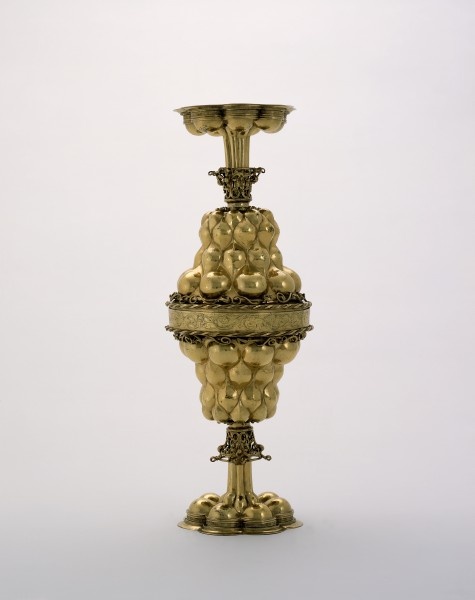Doppelpokale bestehen aus zwei formgleichen Hälften, deren Öffnungen passgenau aufeinander sitzen. Die reich gebuckelte Form mit kanneliertem Schaft wurde im späten 15. Jahrhundert in Nürnberg, dem damals führenden deutschen Goldschmiedezentrum, entwickelt und veränderte sich über rund zwei Jahrhunderte kaum. Unser Pokal entstand um 1500. Als ihn knapp 100 Jahre später der Leipziger Rat ankaufte, wurde in jede Fußunterseite eine Plakette mit der Jahreszahl 1593 und dem Leipziger Stadtwappen eingefügt.
Aus dem Leipziger Ratsschatz, 1875 übernommen.
en

